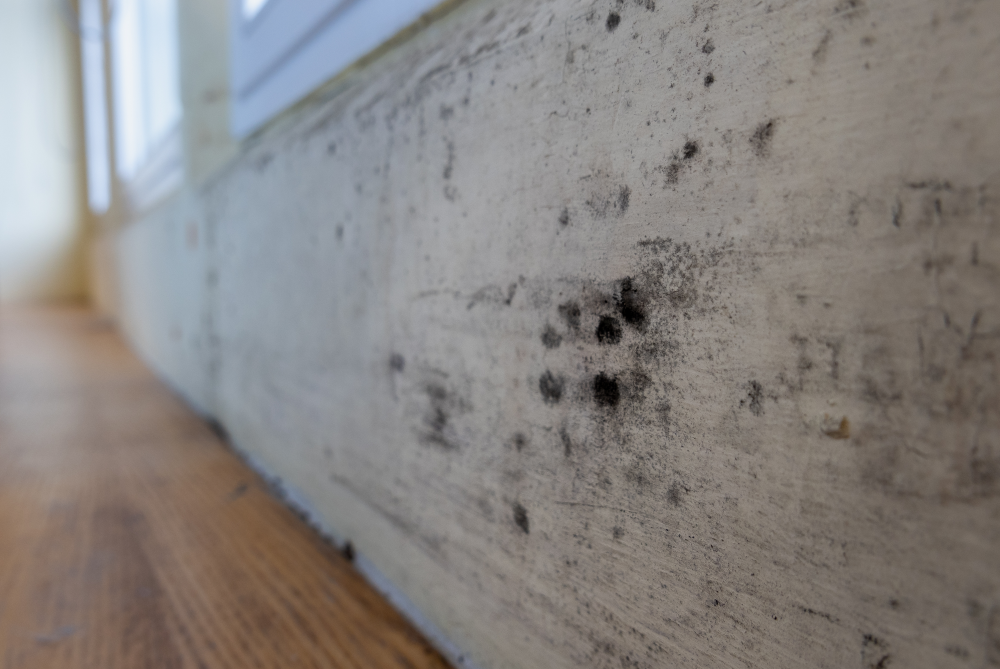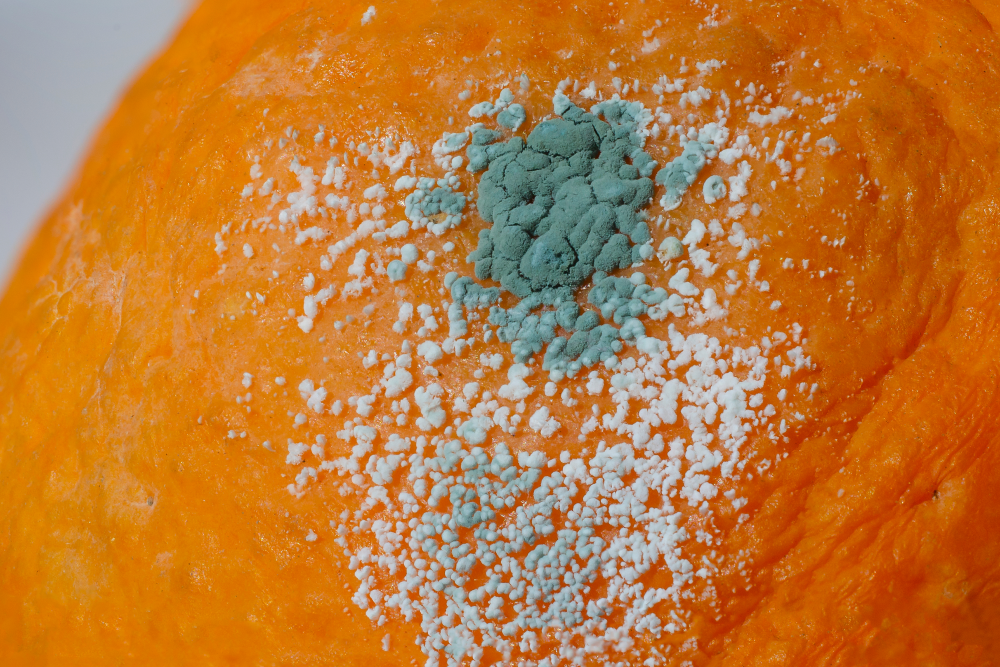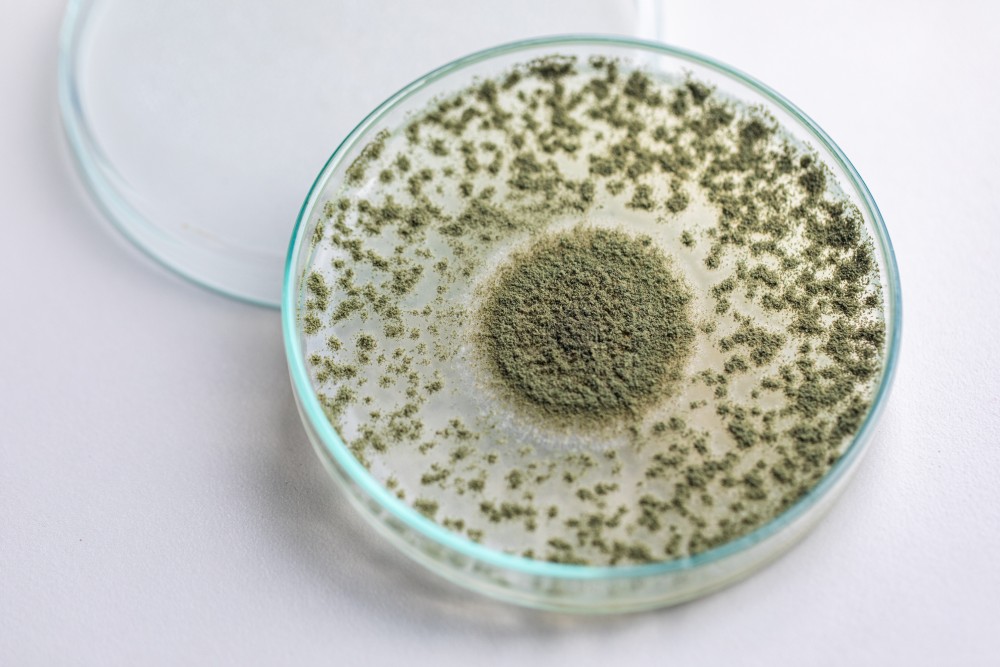ADVERTISEMENT GO AD FREE
It can sometimes feel like you’re playing mold Whac-A-Mole when you’ve found yourself in a particularly damp property, something fungus needs to thrive. There’s a host of species that have evolved to flourish in the conditions our homes provide, and sometimes their coloration can be an indicator of what you’re dealing with.
What is mold?
Mold is a structure that some fungi can grow, often taking on a dark, fuzzy-like appearance with a musty odor. It thrives in places where there’s a lot of moisture, so leaky roofs, windows, pipes, and damp rooms like your bathroom are its favorites.
The risks of mold
Before we dive in, it’s important to remember that fungi are just one variety of microscopic organisms we inhale on a daily basis, joining bacteria, viruses, mites, algae, and protozoa. Life is messy and we don’t need to live inside a sanitized vacuum to stay healthy, but chronic exposure to certain kinds can come with adverse health effects, especially for those with existing health conditions.
That’s because to reproduce and disperse, mold pumps out microscopic airborne spores. We’re being exposed to mold daily, but when we’re healthy our immune system has the tools to prevent most exposures leading to anything nasty.
The most common side effects of mold exposure are minor things like a stuffy nose, wheezing, and itchy eyes, but chronic exposure can be dangerous. Mold exposure can also act as a trigger for people with asthma, respiratory conditions, weak immune systems, or specific allergies, making them unwell.
In the UK, a high-profile case concluded 2-year-old Awaab Ishak died as a result of exposure to mold in his family’s flat in Rochdale. The tragic story raised all kinds of social issues – from poverty to institutional racism – but it also highlighted the underappreciated impact of mold-related health impacts.
ADVERTISEMENT GO AD FREE
As such, it pays to be wary of damp and the subsequent mold it can unleash, so let’s take a look at some of the most common culprits.
Black mold

This black mold is Stachybotrys.
Image credit: eyematter / Shutterstock.com
Black mold is an unfortunately common sight in houses with damp, but there are several species that can appear black, some more toxic than others. Among the least desirable is Stachybotrys, a kind that loves growing on things with a high cellulose content. That makes materials like fiberboard, gypsum board, and paper prime real estate for this home invader that requires constant moisture to thrive.
Aureobasidium is a likely candidate if your black mold is joining you in the shower. At high levels, it can cause hypersensitivity and allergies, and well as respiratory symptoms when there’s lots of it in in your home. You can blitz it with a diluted bleach mixture, but the coloration may hang around even after the fungus has perished.
Blue mold

Recognize this? Our old pal Penicillium.
Image credit: Kateryna Kon / Shutterstock.com
If you’ve ever wiped away some mold only for it to poof into what looks like smoke, you could be dealing with Penicillium. Dead handy when being wielded as an antibiotic for the right kind of infections, but less ideal when it’s targeting your fruit bowl. That cool smoke trick is a dispersal method, so don’t try this one at home unless you want to spread the mold to the rest of your fruit bowl.
ADVERTISEMENT GO AD FREE
Penicillium mold can be harmless, as in the case of Penicillium roqueforti that’s used to make blue cheese. However, you won’t necessarily be able to know just by looking at blue mold what species it is, or indeed which genus.
Another type of blue mold is called Aspergillus, a fungus that can cause the disease aspergillosis (that some have suggested could explain the “Pharoah’s Curse”). Both Penicillium and Aspergillus have species that produce harmful mycotoxins, so blue mold is another one that should be swiftly evicted.
Green mold

Aspergillus oryzae, a lovely hue for paint but not in spore form.
Image credit: Sinhyu Photographer / Shutterstock.com
If the mold in your house is green, there are three key suspects: Penicillium and Aspergillus we’ve already encountered, and then we have olive-hued Cladosporium. Together they make up the most common indoor molds, according to the Centers For Disease Control And Prevention (CDC).
Cladosporium species are abundant globally and in the home often make camp in soft furnishings, wood, and even in faucets. Exposure can affect people differently, but common symptoms include respiratory issues like congestion, running nose, and sneezing, coughing, and wheezing, as well as watery, itchy eyes, scratchy throat, and dry skin.
ADVERTISEMENT GO AD FREE
As well as being naturally widespread, Cladosporium has cropped up in all kinds of unusual places. It was highlighted as contender living inside ancient Twinkies (that food item everyone thought would survive the apocalypse), and is thriving in *checks notes* the nuclear reactor at Chernobyl. In fact, scientists believe it could even be harnessed to provide protection from radiation in space.
Living with mold: don’t do it
We science-minded folk can’t help but approach even the most mundane aspects of our lives with a curiosity to know more, but the key takeaway when it comes to mold in your home is that the genus or species doesn’t really matter. If you can see it and smell it, you want it gone.
The CDC has some tips on banishing the fungal rainbow, as well as symptoms to look out for if you’re concerned about exposure. Mycology is a study best done by going out into the field, and not inviting the mushrooms to cohabit with you.
Source Link: What The Different Colors Of Mold In Your House Say About The Health Risks